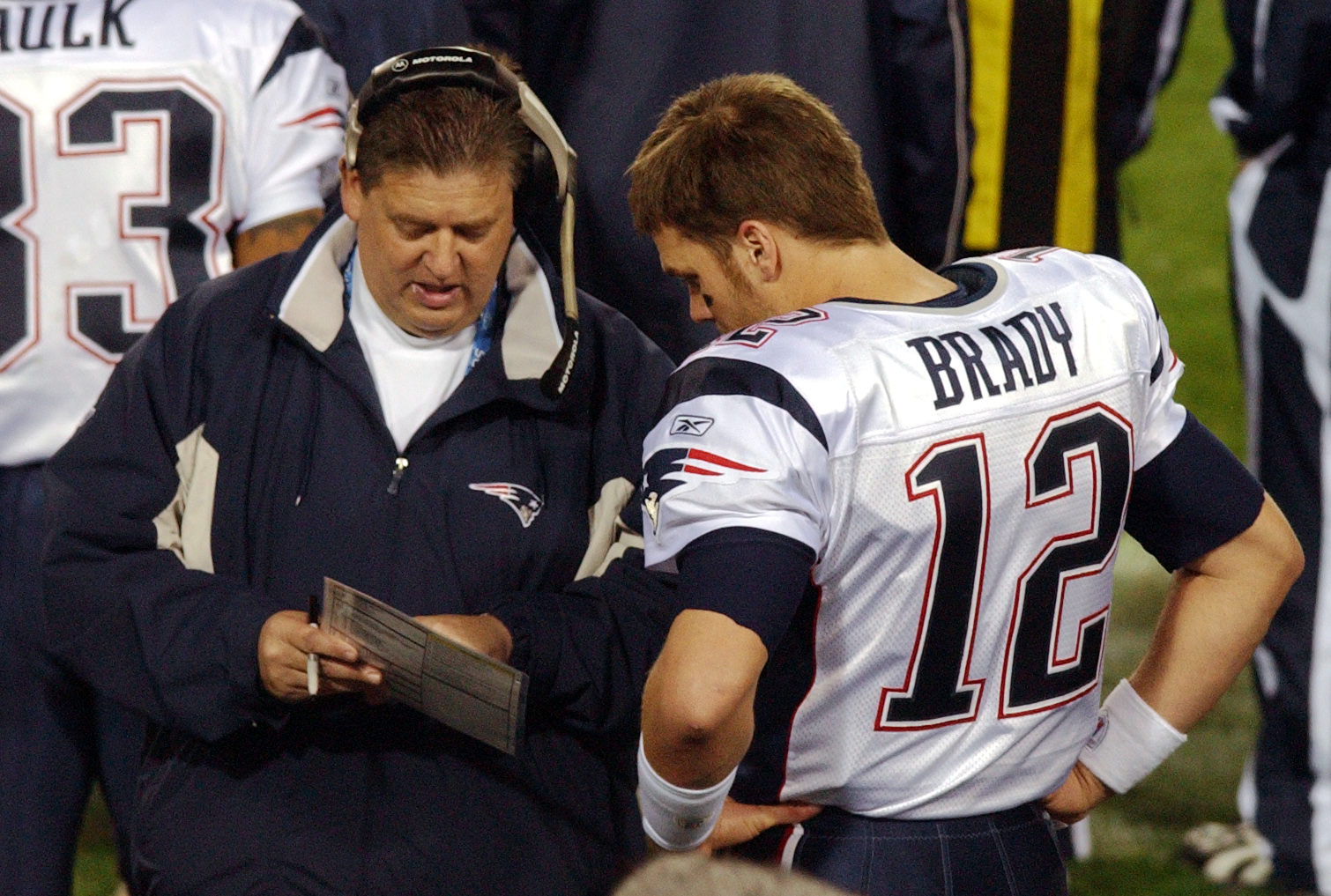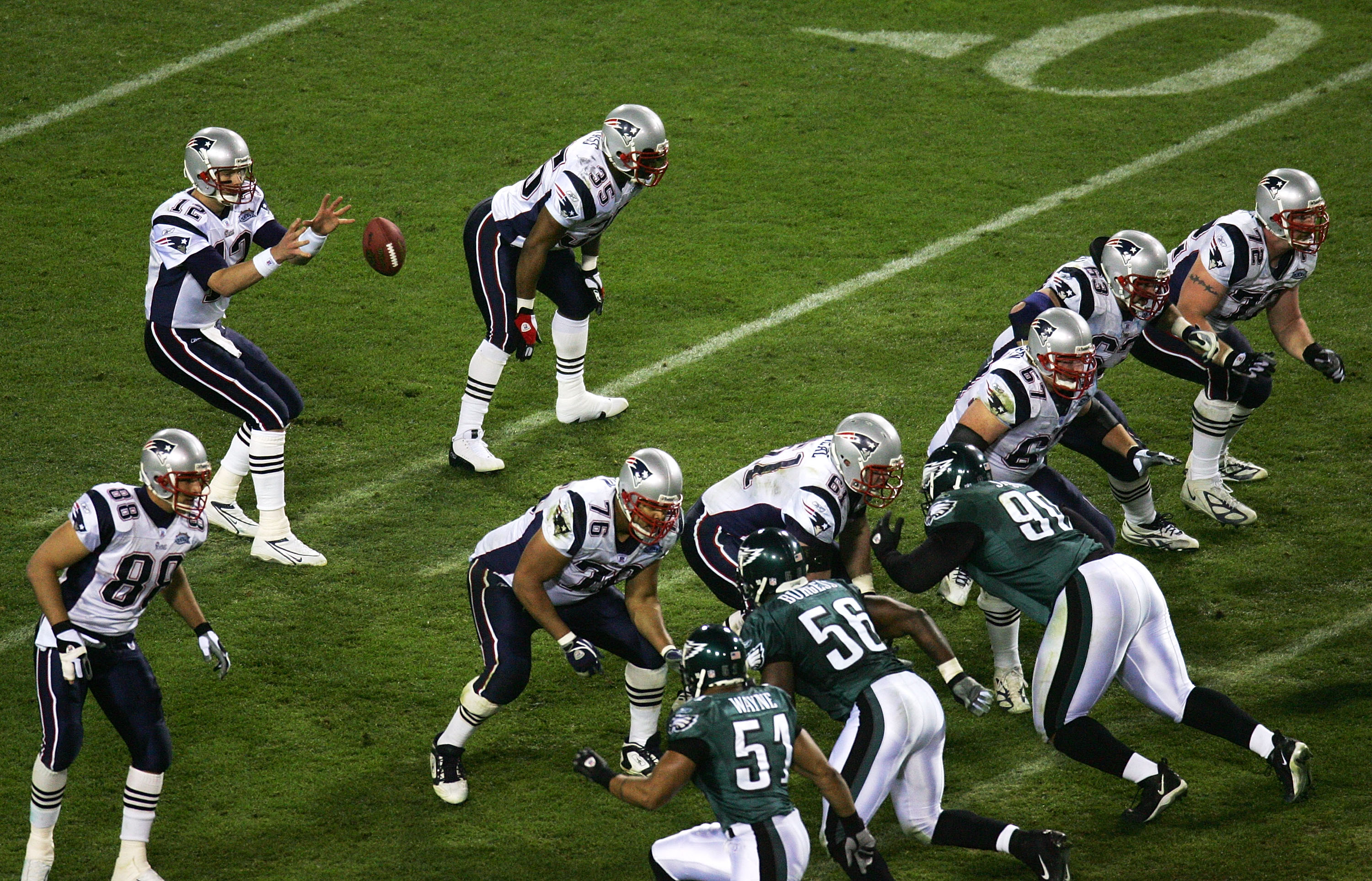Taking it Personnel-ly | by Michael
 "Let them try to stop a pro-style offense, which has 'multiple' personnel groups and 'multiple' formations. Let's see how they are going to do.”
"Let them try to stop a pro-style offense, which has 'multiple' personnel groups and 'multiple' formations. Let's see how they are going to do.”
-- Charlie Weis
Coach Weis issued that bold challenge to opposing defensive coordinators earlier this spring in an ND Magazine article. There were probably a few Irish fans who, when they heard the "M" word, couldn't help but remember a certain failed ex-coordinator's philosophy of "multiplicity". You remember, this one:
"At Syracuse, we did about eight different groupings like that," Kevin Rogers says. "And within those groupings, we can have anywhere from 25 to 30 formations. The multiplicity of that -- having an option game, a dropback passing game, a play-action passing game out of each one of those formations -- enables you to really keep defenses off balance."I apologize for dredging up ugly memories of the Davie era...and I'm here to tell you that it's safe to climb back off the ledge.
Despite their shared use of the "M" word, there are key differences in the offensive philosophies between Weis and Rogers. While Rogers utilized a wide variety of plays and formations, Weis on the other hand appears to prefer running the same plays, repeatedly, out of different formations and personnel groups. One leads to confusion within your own offense; the other creates confusion for the defense.
But there's that phrase again: personnel groups. What exactly are those? Let's quickly run through some of the basics, but keep in mind that teams may have different names for these groupings, or "packages"; these are just some common terms.
(To view the different formations, "mouse over" the bulleted items)
Here's how different personnel groups are used.
In the weeks and months leading up to a game, an offensive coach will scout his opponent to determine at what breaking point their defense, if they substitute according to down and distance, will switch from base personnel. For example, in short yardage, goal line, and nickel and dime packages, they will examine who comes in, who comes out, and when. He'll also note when a
 defense substitutes according to the offensive personnel on the field, and prepare against these patterns and tendencies.
defense substitutes according to the offensive personnel on the field, and prepare against these patterns and tendencies.Furthermore, once the game starts, what a good offensive coach like Weis will do is show different offensive personnel groupings early in the game to see how the defense responds. Based upon those initial reactions -- plus the tendencies that the staff has noted from the previous scouting prep work -- the OC will begin to group his players together with formations and plays where they now have an excellent idea of what personnel the defense will use. Creating the most favorable match-ups and keeping the defense on its heels is the desired outcome.
Check out this excellent article by Pat Kirwan of NFL.com on the Patriots' offense. While it gives a lot of credit to Bill Belichick, obviously Weis deserves kudos as well when discussing offensive personnel groupings. There's some great stuff in there, including this tasty nugget from Kirwan:
In the Pats' first 20 plays I recorded, they were in six different personnel groupings...During the third series of offensive plays, [Weis] sent out four different personnel groups in the first four plays, which can create stress on a defense.Now, it's important to draw a distinction between a player's stated "position" on the depth chart, and where they actually line up for a given play. Maryland head coach Ralph Friedgen is another offensive mind who thinks in terms of personnel groupings. Commenting on his offense, he says,
 "The more you can do with the same personnel group the better you are. When I went to Georgia Tech with George O'Leary, he used to talk about personnel groups being synonymous with formations. He thought like a lot of defensive coaches. He thought if you had two tight ends, one back and two wide receivers, you were going to be in that formation. I didn't understand that." Neither does Weis.
"The more you can do with the same personnel group the better you are. When I went to Georgia Tech with George O'Leary, he used to talk about personnel groups being synonymous with formations. He thought like a lot of defensive coaches. He thought if you had two tight ends, one back and two wide receivers, you were going to be in that formation. I didn't understand that." Neither does Weis.What further strengthens this concept is when you have versatile players who are capable of playing different positions: tailbacks who can catch the ball; fullbacks quick enough to play tailback, etc. For instance, Coach Weis has talked about using Rashon Powers-Neal as both a fullback and a tailback, and running back Justin Hoskins is reportedly working in the slot as well as in the backfield. As you can imagine, versatility magnifies how you can exploit a defense through the mixing and matching of personnel groups.
Let's try an example using a set that I think we may see quite a bit of next year considering the talents of tight ends Anthony Fasano, Marcus Freeman and John Carlson - a "Heavy" package with three tight ends.
If a defense sees three TEs and doesn't substitute for run-stopping personnel, Weis might run Darius Walker at them until they do. If and when they do bring in that personnel, Weis might have a RB, especially someone like Hoskins, line up in the slot to give an "empty look".

Fasano, Freeman, Carlson, Hoskins and McKnight would make an impressive group of receivers on the field, but more importantly, the multi-dimensionality of our TEs is what makes such a scheme possible: the threat of "spreading" the field using run-based, or "heavy" personnel will immediately create problems for a defense. This is just one example, out of many, but hopefully it provides some context.
What makes Weis' system even more difficult to prepare for is that week after week, he doesn't settle into predictable tendencies (another significant difference from Kevin Rogers). An ESPN article from last fall talks about how Charlie liked to switch it up:
The Patriots [give] you different flavors each week. Against Indianapolis, New England ran something like 25 snaps out of a new variation of its empty set (no backs, two tight ends, three wide receivers). Arizona spent a lot of practice time preparing for the empty look, and saw the formation [only] twice the following week.Let's look ahead to our first game this fall. Given that new Pitt coach Dave Wannstedt wants smaller, faster players on his Panthers defense this year, there is a very good chance that our game plan will involve trying to overpower them with the run, and Coach Weis may decide to attack Pittsburgh with a fairly vanilla offense. He may utilize the Deuce package quite a bit (two running backs, 2 tight ends, 1 wide receiver). Assume Walker and Powers-Neal comprise the backfield, Fasano and Carlson are the tight ends, and Maurice Stovall is playing WR:

 As Weis has demonstrated, by concentrating on avoiding predictable tendencies, an offense can really stress out a defense. It's worth noting that only once in three years under Tyrone Willingham did we achieve this kind of week-to-week unpredictability: at Pitt in 2003. Former Pitt head coach Walt Harris was so focused on stopping the pass after Brady Quinn threw 59 times against Purdue the previous week, but instead of throwing, we ran the ball. The Irish pounded Pitt for 353 yards rushing, and Julius Jones even set the school single-game rushing record (262 yards). Of course, this inventiveness and adaptability was short-lived, and our offense turned back into a pumpkin soon after.
As Weis has demonstrated, by concentrating on avoiding predictable tendencies, an offense can really stress out a defense. It's worth noting that only once in three years under Tyrone Willingham did we achieve this kind of week-to-week unpredictability: at Pitt in 2003. Former Pitt head coach Walt Harris was so focused on stopping the pass after Brady Quinn threw 59 times against Purdue the previous week, but instead of throwing, we ran the ball. The Irish pounded Pitt for 353 yards rushing, and Julius Jones even set the school single-game rushing record (262 yards). Of course, this inventiveness and adaptability was short-lived, and our offense turned back into a pumpkin soon after.The upcoming season should be different, however. In a few 2005 post-game pressers, I fully expect to hear something like this Charlie Weis excerpt from a post-Super Bowl interview:
"We were able to spread them out and get them in some personnel groups that they were uncomfortable with."

